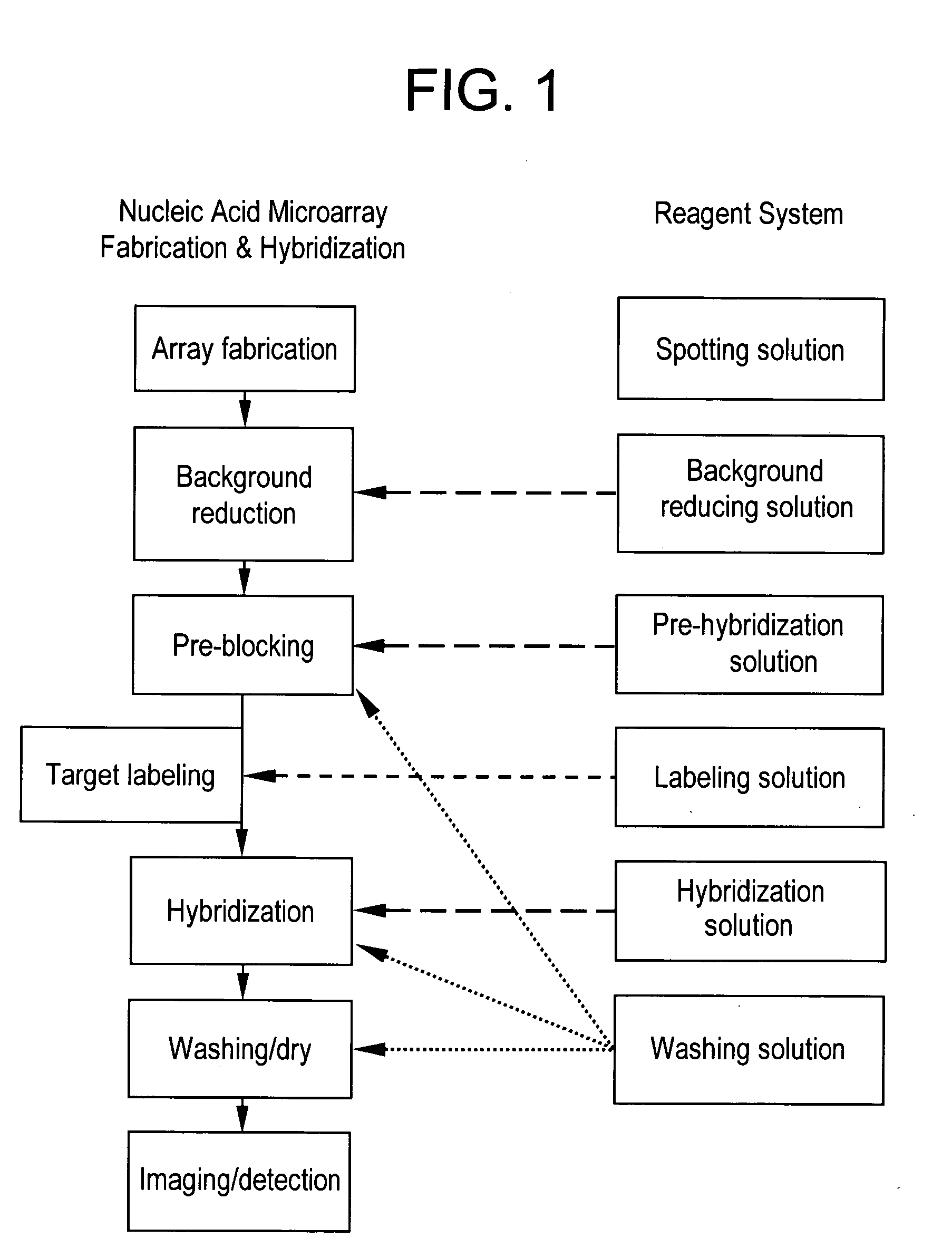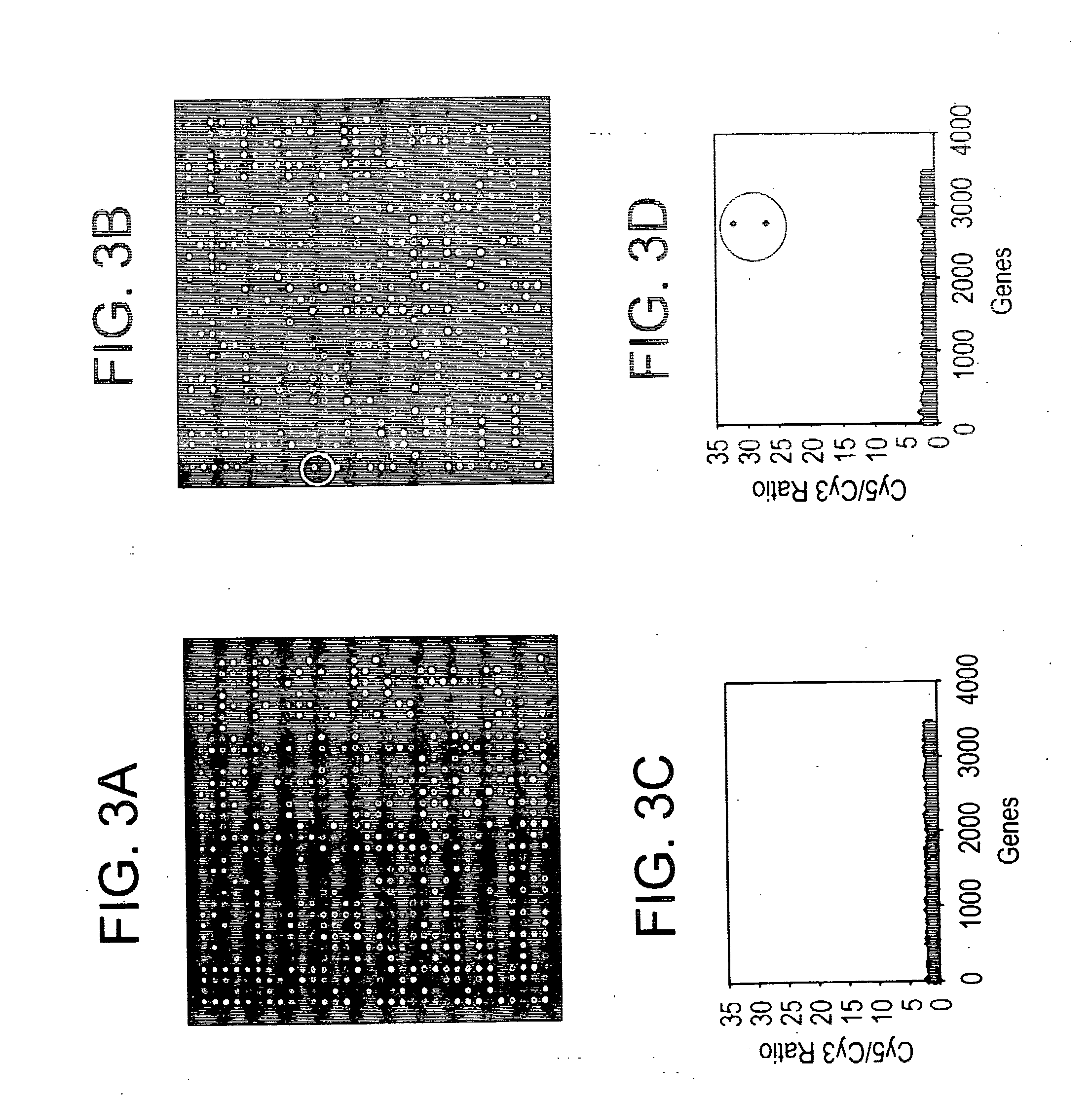Reagent systems for biological assays
- Summary
- Abstract
- Description
- Claims
- Application Information
AI Technical Summary
Benefits of technology
Problems solved by technology
Method used
Image
Examples
examples
[0098] The following are illustrative examples of the reagent solutions, which further describe the present invention, its uses and advantages.
example i
Fabrication of Oligonucleotide Arrays
[0099] 1. Preparation of Oligonucleotide Probe Solution
[0100] Following one of alternative methods a) or b), below, DNA source plates (e.g., sterile, nuclease-free Corning 384-well Storage Plates; Cat. No. 3656) are prepared. Sufficient volume of printing solution needs to be prepared to cover the bottom of the receiving wells; this corresponds to between 5 and 10 μl per well when using 384-well plates. [0101] a) Dissolve oligonucleotides to a maximum of 1.0 mg / ml (0.5 is a good starting concentrations for further optimization) in the spotting solution according to the present solution. Transfer DNA solution to Corning 384-well plate. [0102] b) Alternatively, add the desired volume of the spotting solution to wells containing DNA that has been dried by vacuum centrifugation.
[0103] 2. Array Fabrication Using Pin Printing Technology
[0104] To form a microarray in a desired configuration with desired density, according to manufacturer's or labora...
example ii
Fabrication of Double-Stranded DNA Arrays
[0107] 1. Preparation of Double Stranded Probe Solution
[0108] DNA source plates (sterile, nuclease-free Corning 384-well Storage Pates are recommended; Cat. No. 3656) are prepared by one of alternative methods a) or b), below. Sufficient volume of printing solution needs to be prepared to cover the bottom of the receiving wells; this corresponds to between 5 and 10 μl per well when using 384-well plates. [0109] a) Dissolve dsDNA (typically Polymerase Chain Reaction amplified products generated from plasmid libraries that have been created using traditional cloning principles were RNA is the starting source material) to a maximum of 0.25 mg / ml (0.1 mg / ml is a good starting concentrations for further optimization) in the spotting solution according to the present solution. Transfer DNA solution to Corning 384-well plate. [0110] b) Alternatively, add the desired volume of the spotting solution to wells containing DNA that has been dried by vac...
PUM
| Property | Measurement | Unit |
|---|---|---|
| Temperature | aaaaa | aaaaa |
| Temperature | aaaaa | aaaaa |
| Temperature | aaaaa | aaaaa |
Abstract
Description
Claims
Application Information
 Login to View More
Login to View More - R&D
- Intellectual Property
- Life Sciences
- Materials
- Tech Scout
- Unparalleled Data Quality
- Higher Quality Content
- 60% Fewer Hallucinations
Browse by: Latest US Patents, China's latest patents, Technical Efficacy Thesaurus, Application Domain, Technology Topic, Popular Technical Reports.
© 2025 PatSnap. All rights reserved.Legal|Privacy policy|Modern Slavery Act Transparency Statement|Sitemap|About US| Contact US: help@patsnap.com



